|
|
 |
|
October 30, 2012
A recent visit to the Santa Cruz Mountains convinced me I need to return more often to this unique appellation situated between San Jose and Santa Cruz.
This heavily wooded area was once a sleepy domain dominated by a few giants of California wine – Ridge Vineyards, Mount Eden Vineyards and Bonny Doon. These days there are more than 75 wineries in the appellation, producing Pinot Noir, Chardonnay, Cabernet Sauvignon and Bordeaux-style and Rhone-style blends.
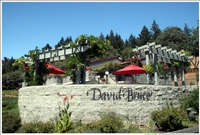 On a beautiful fall day I took the scenic drive on California Highway 17, over the mountains to Santa Cruz and the Pacific Ocean, a mere 20 miles or so from downtown San Jose. Along the way I decided to take a detour and visit the David Bruce Winery, long renowned for its terroir-driven Pinot Noir and Chardonnay. On a beautiful fall day I took the scenic drive on California Highway 17, over the mountains to Santa Cruz and the Pacific Ocean, a mere 20 miles or so from downtown San Jose. Along the way I decided to take a detour and visit the David Bruce Winery, long renowned for its terroir-driven Pinot Noir and Chardonnay.
The David Bruce vineyards are situated in a forested area more than 2000 feet above sea level, less than 20 miles from the ocean. The days are warm and the nights are cool, the perfect climatic environment for Pinot and Chardonnay. The estate Chardonnay is firmly structured, and exhibits notes of lemon oil and spice. The estate Pinot is earthy and luscious, with a bit of tannic grip on the finish that bodes well for a long life.
I consider both wines collectibles, priced in the $50 range, with ample upside if you choose to cellar them for additional maturity and complexity.
Posted by Robert Whitley at 9:58 AM
|
|
October 17, 2012
Regular readers of Wine Review Online know that I’ve been focused intently on Barolo and Barbaresco in recent years, traveling there and reviewing more than 300 wines each year. The reasons for this are clear. No region in the world has enjoyed such an astonishing string of great vintages (since 1996!), and none of the world’s great wines have improved as much as these have over that span. If decanted and paired with food, they can be enjoyed soon after release, but can also benefit from cellaring for over a decade…or two. They are the only wines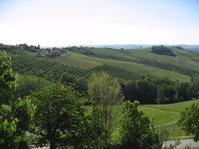 in the world that offer a level of complexity and individuation comparable to red Burgundy, yet the best wines are far less expensive. Add all of that up, and my apparently crazed fixation on Barolo and Barbaresco might not seem quite so crazed. in the world that offer a level of complexity and individuation comparable to red Burgundy, yet the best wines are far less expensive. Add all of that up, and my apparently crazed fixation on Barolo and Barbaresco might not seem quite so crazed.
Those who are still learning about these wines (which means everyone, since this is a very complex area that is changing at a very rapid rate) should know that success in buying Barolo and Barbaresco involves another comparison to Burgundy: Despite the great importance of vineyard sites in determining the character of the wines, nothing is as important in determining their quality as the capability of the particular producer. The Nebbiolo grape is perhaps the only important red variety that is even more difficult to grow and vinify than Pinot Noir, so there’s no substitute for skill and experience when crafting these wines.
There are many excellent producers in Barolo and Barbaresco, but those at the very top all share a common profile: Great vineyards, accumulated experience, a willingness to innovate, and a skillful ability to work with the fickle nature of Piedmont’s climate and the Nebbiolo variety.
 That description is a perfect fit for Paolo Scavino. Enrico Scavino has been crafting the wines of this house for more than 60 years, now working with his daughters Enrica and Elisa. The family owns vineyards in six of Barolo’s eleven communes, including Barolo, Castiglione Falletto, La Morra, Roddi, Serralunga and Verduno. Enrico has been among the region's leading innovators for decades, and the consistency of the wines from year to year is remarkable. As for skill, have a look at the wines reviewed below. That description is a perfect fit for Paolo Scavino. Enrico Scavino has been crafting the wines of this house for more than 60 years, now working with his daughters Enrica and Elisa. The family owns vineyards in six of Barolo’s eleven communes, including Barolo, Castiglione Falletto, La Morra, Roddi, Serralunga and Verduno. Enrico has been among the region's leading innovators for decades, and the consistency of the wines from year to year is remarkable. As for skill, have a look at the wines reviewed below.
One quick note regarding my admiration for these wines: I have never met the Scavino family, so you can rest assured that my judgment hasn’t been clouded by being charmed in their cellar or at their table. I’ve enjoyed the wines sporadically for years, but have never lined up the different bottlings for a comprehensive, focused tasting until last week. Have a look at my reactions:
Paolo Scavino, Barolo 2007 ($52, Banville & Jones): This exemplary producer turns out four or five more particular and more expensive bottlings from Barolo each year, so one might be tempted not to take this wine seriously on the theory that it is assembled from inferior components. That would be a bad mistake, as this shows very serious concentration and depth of flavor, along with more complexity and class than many single cru wines from other Barolo producers. It shows the ripe, plush character of the very warm 2007 vintage, and is already very enjoyable to taste even at this young age, but it has the structure and guts to develop for at least another five years. 91
Paolo Scavino, Barolo “Bricco Ambrogio” 2007 ($75): Bricco Ambrogio is a highly 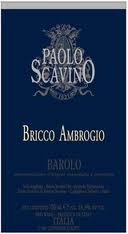 regarded cru among insiders in Barolo, but is little known in export markets on account of being situated in the small and rather obscure commune of Roddi. Scavino’s 2007 rendition shows striking ripeness and very generous fruit that is backed by plenty of fine-grained tannins and tasteful framing from subtle oak. Dark cherry and black plum fruit notes are accented with a floral topnote and undertones of tobacco leaves and spices. 92 regarded cru among insiders in Barolo, but is little known in export markets on account of being situated in the small and rather obscure commune of Roddi. Scavino’s 2007 rendition shows striking ripeness and very generous fruit that is backed by plenty of fine-grained tannins and tasteful framing from subtle oak. Dark cherry and black plum fruit notes are accented with a floral topnote and undertones of tobacco leaves and spices. 92
Paolo Scavino, Barolo “Monvigliero” 2007 ($75): Remarkably firm and structured for a Barolo from the famously warm 2007 growing season, this will take far longer to unwind than most wines from this vintage, but then again it already shows more emergent complexities than the vast majority of its counterpart wines. Floral aromatic accents prove very alluring, and are joined by subtle notes of spices, woodsmoke and truffles. The fruit is dark and dense and backed by formidable tannins, but there’s an engaging, endearing sweetness to the fruit that enables the wine to achieve near perfect balance. A terrific achievement. 95
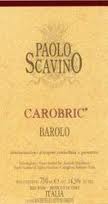 Paolo Scavino, Barolo “Carobric” 2007 ($90): This shows excellent complexity and detail, with intricate aromas and a host of balanced flavor notes that add up to a wine that seems, well, complete. Ripe but also quite fresh, with welcoming softness but also plenty of subtle structure from acidity, tannin and oak, this exceptionally well made wine is sourced from three top vineyard sites. Some purists may prefer more individuated wines that display the particularity of a single site, which is fine, since that will leave more of this for the rest of us who can appreciate its remarkable symmetry and completeness. 94 Paolo Scavino, Barolo “Carobric” 2007 ($90): This shows excellent complexity and detail, with intricate aromas and a host of balanced flavor notes that add up to a wine that seems, well, complete. Ripe but also quite fresh, with welcoming softness but also plenty of subtle structure from acidity, tannin and oak, this exceptionally well made wine is sourced from three top vineyard sites. Some purists may prefer more individuated wines that display the particularity of a single site, which is fine, since that will leave more of this for the rest of us who can appreciate its remarkable symmetry and completeness. 94
Paolo Scavino, Barolo “Cannubi” 2007 ($120): Scavino’s rendition of Cannubi from the 2007 vintage is wonderfully expressive and generous at this relatively early stage in its development, showing lifted aromatics and rich, sweet fruit augmented by very appealing savory notes recalling carpaccio and truffles. The tannins are certainly notable but have no astringent effect on the finish, which is very persistent, with all of the flavor notes tailing off symmetrically. A beautiful wine. 94
Paolo Scavino, Barolo “Bric dël Fiasc” 2007 ($120): This extraordinary wine manages to show all the virtues of the 2007 vintage (great richness and remarkable textural softness) without any of the vices (a slightly stewed aromatic note and a lack of balancing firmness) that afflict the less successful products of this hot growing season. The core of dark berry fruit shows striking vibrancy and freshness but also great depth and warmth, with intriguing accents of fresh flowers, incense, Asian spices and anise seed. Intricate but also very powerful, this is already very tempting, but is best cellared for another five years to enable it to attain all of its 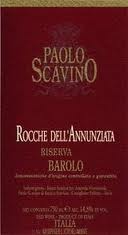 marvelous potential. 96 marvelous potential. 96
Paolo Scavino, Barolo Riserva “Rocche dell’Annunziata” 2005 ($200): This is an astonishing bottle of wine…and the single best Barolo from the 2005 vintage that I have tasted, which is a set that includes hundreds of bottles. Really just beginning to show the full range of its charms, it displays admirable density and depth of flavor, but its most outstanding attributes are its marvelous aromatic complexity and its broad range of distinct flavor notes. The core of dark berry fruit remains quite pure and fresh despite 36 months of oak ageing, and the fruit is greatly enhanced by accents recalling lavender, baking spices, woodsmoke, damp earth, and cured meat. The finish is precise and very persistent, and if there’s any error in my score for the wine, I’ve missed on the low side. 96
Paolo Scavino wines are imported by Banville & Jones.
Posted by Michael Franz at 10:40 AM
|
|
October 12, 2012
It was a number of years ago, on my first visit to Israel, that I met Victor
Schoenfeld, the American winemaker working at the Golan Heights Winery.
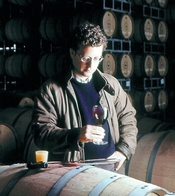 I was
impressed and pleasantly surprised at the time by Schoenfeld's wines,
particularly the reds. But I had very little memory of the whites when I opened
a bottle of the 2010 Yarden Chardonnay ($18.99) recently. Yarden is a label
produced by the Golan Heights Winery and it is a Victor Schoenfeld wine, so at
the very least I was optimistic as I extracted the cork. I was
impressed and pleasantly surprised at the time by Schoenfeld's wines,
particularly the reds. But I had very little memory of the whites when I opened
a bottle of the 2010 Yarden Chardonnay ($18.99) recently. Yarden is a label
produced by the Golan Heights Winery and it is a Victor Schoenfeld wine, so at
the very least I was optimistic as I extracted the cork.
As I poured a glass I remembered the surprisingly cool, moderate climate I
encountered at the Golan Heights Winery, situated several thousand feet above
sea level, with rocky volcanic soils and dry growing conditions. There's no
reason, I thought, that the whites couldn't be just as good as the reds.
In the glass the Chardonnay was darkly colored, evidence of its time in
barrel. On the nose I picked up a hint of sweet baking spice, lemon oil, and
baked apple. I was fully prepared for the possibility this would be a tasty but
very ripe Chardonnay.
On the palate, however, I came upon a miraculous discovery: This was a
positively brilliant Chardonnay, reminding me immediately of the prized
Chardonnays made from California's famed Sleepy Hollow Vineyard.
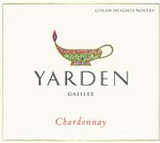 The Yarden was indeed a big, oily Chardonnay, but with firm
backbone, complex layers of flavor, and a clean, fresh finish. The Yarden was indeed a big, oily Chardonnay, but with firm
backbone, complex layers of flavor, and a clean, fresh finish.
Chardonnay of this ilk is rare. Burgundy's Corton-Charlemagne is the gold
standard for this style, and Australia's Leeuwin Estate and New Zealand's Kumeu
River are right up there. The difficulty is achieving power, flesh and
oily mouthfeel without losing the fresh acidity, balance and refinement.
Yarden does that. Kudos to Victor Schoenfeld; you've made a believer out of
me.
Posted by Robert Whitley at 9:08 AM
|
|
October 10, 2012
I was interested to read recently in The New York Times that adding milk to black tea reduces the effect of the antioxidants, vitamins and other healthful compounds inherent in tea. This happens because the proteins in milk bind to and neutralize the tannins in the tea. Likewise, when certain cheeses are paired with red wine the proteins in the cheese soften the wine’s 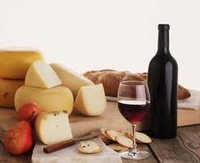 tannins. Black tea and wine are the world’s most tannic beverages. Since I am one of those who like to add a splash of milk to my daily infusions of tea, and because I like wine (and cheese) too, I find this liaison between tannin and protein fascinating. tannins. Black tea and wine are the world’s most tannic beverages. Since I am one of those who like to add a splash of milk to my daily infusions of tea, and because I like wine (and cheese) too, I find this liaison between tannin and protein fascinating.
But what exactly are tannins? This is among the most frequently asked questions asked by wine education students, and it is one of those lessons most easily demonstrated by actual tasting rather than explaining. It’s hard to understand the sensation produced by tannins until one actually tastes--or, more accurately, feels--that specific tactile impression of astringency in the mouth while drinking red wine. (The perception of tannin is not to be confused with the tart sensation of acidity, or the mouth-puckering sharpness produced by underipe grapes).
With wine, what happens is that the tannins bind the mouth’s own lubricating mechanisms, rendering them hors de combat as it were. But if the wine is accompanied by certain kinds of cheese the milk protein in the cheese acts like a soothing balm to calm aggressive tannins. This dance between tannin and proteins is what makes high-protein foods such as steak so delicious with wine.
In grapes, tannins exist principally in the fruit’s skin, seeds and stems, and they play an important role in the fruit’s development. Combined with the high acidity of unripe grapes, the tannins makes the fruit unpalatable to birds, which allows the grapes time to develop color and sugars and to lower acidity and astringency.
In the wine, tannins undergo many different physical and chemical changes, and are important  factors affecting the wine’s color and aging potential as well as its mouth-feel. They can help add structure to otherwise thin and/or weak wines. One way vintners add tannin to wine is by aging it in oak barrels, fermenting it with oak chips, or using commercial tannin additives. Since many grape varieties are naturally low in tannins, vintners often add whole grape clusters to fermenting wine to increase the tannin content of the finished wine. The downside of this is that if the stems are not fully ripe the wine may taste unpleasantly green and astringent. (Whole cluster fermentation can affect the wine in a host of other ways as well, but that, as they say, is another story.) factors affecting the wine’s color and aging potential as well as its mouth-feel. They can help add structure to otherwise thin and/or weak wines. One way vintners add tannin to wine is by aging it in oak barrels, fermenting it with oak chips, or using commercial tannin additives. Since many grape varieties are naturally low in tannins, vintners often add whole grape clusters to fermenting wine to increase the tannin content of the finished wine. The downside of this is that if the stems are not fully ripe the wine may taste unpleasantly green and astringent. (Whole cluster fermentation can affect the wine in a host of other ways as well, but that, as they say, is another story.)
Because tannins are such an important, and generally pleasing component in the overall experience of drinking red wine, wine critics have developed an evocative vocabulary to try and describe the general effect of tannin on the palate. Common adjectives include velvety, dry, sandy, coarse, silky, smooth, green, and even splintery. I just took a quick look at a group of current reviews in Wine Review Online, noting that my colleagues’ descriptions of tannins include “mild,” “not intrusive,” “grainy,” “dusty,” “drying.” Few of these particular adjectives, by the way, are meant as a negative. Some wine drinkers prefer smooth red wines with only the subtlest of tannic intrusion, while many others, myself included, relish the good firm, well-balanced grip of tannin.
Posted by Marguerite Thomas at 9:03 AM
|
|
October 2, 2012
Creators Syndicate
When the French have a hissy fit over U.S. wine labels that promise Champagne
or Burgundy in the bottle, I get that. The so-called “place names” are the
official guarantee that what the label says is actually what’s in the
bottle.
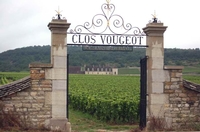 This sacred concept simply means that when a buyer
purchases a wine that has the term Champagne on the label, the consumer can rest
assured the wine in the bottle was produced in the Champagne region of France,
or Burgundy if the label indicates Burgundy. This sacred concept simply means that when a buyer
purchases a wine that has the term Champagne on the label, the consumer can rest
assured the wine in the bottle was produced in the Champagne region of France,
or Burgundy if the label indicates Burgundy.
Though a handful of U.S.
wineries have been grandfathered in and can still market their wines using the
French place-names on the label, the practice has been outlawed through trade
agreements with the European Union and largely eliminated.
Now comes
another dispute over labeling and I am not so sure the French are on equally
strong footing. There is a proposal before the EU to lift a ban on the sale of
U.S. wines from wineries that have the French terms “chateau” or “clos” in their
name. Napa Valley neighbors Clos Pegase and Chateau Montelena quickly come to
mind.
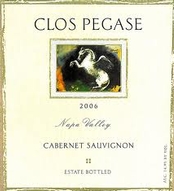 The French oppose the change, arguing that these terms, as
understood in the French wine culture, indicate the wine in the bottle is made
from grapes either grown on the estate, the chateau, or in a delineated area
such as a clos, meaning a specific vineyard, usually one that is walled
off. The French oppose the change, arguing that these terms, as
understood in the French wine culture, indicate the wine in the bottle is made
from grapes either grown on the estate, the chateau, or in a delineated area
such as a clos, meaning a specific vineyard, usually one that is walled
off.
Wineries in the United States have no such restrictions on the use
of those terms. Clos Pegase and Chateau Montelena may well use estate-grown
grapes, but they are also permitted to purchase grapes from private growers and
bottle those wines under the existing labels using the terms clos and
chateau.
The French argument is silly on a couple of levels. First of
all, the terms clos and chateau mean nothing if not attached to a highly
regarded producer with a known commitment to quality. What’s important is the
producer’s name that follow’s the term. There are good chateau owners and bad.
Good clos and bad.
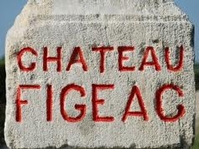 A chateau is a
building, not an estate exclusive to France. If Dr. Konstantin Frank of the
Finger Lakes region in upstate New York wants to market a wine under the Chateau
Frank label, more power to it. What propels Chateau Frank is the reputation of
Dr. Frank and the proven quality in the bottle over many vintages; not the fact
that the Frank property has a building it chooses to identify as a
chateau. A chateau is a
building, not an estate exclusive to France. If Dr. Konstantin Frank of the
Finger Lakes region in upstate New York wants to market a wine under the Chateau
Frank label, more power to it. What propels Chateau Frank is the reputation of
Dr. Frank and the proven quality in the bottle over many vintages; not the fact
that the Frank property has a building it chooses to identify as a
chateau.
The EU is scheduled to take up the proposal to lift the ban this
week. In the overall scheme of things the economic impact will be negligible no
matter how the vote turns out. But in the war over words between French and U.S.
vintners, it’s time for a little common sense. Lift the ban.
Email
comments to whitleyonwine@yahoo.com
and follow Robert on Twitter @wineguru.
Posted by Robert Whitley at 9:45 AM
|
|
 |
|